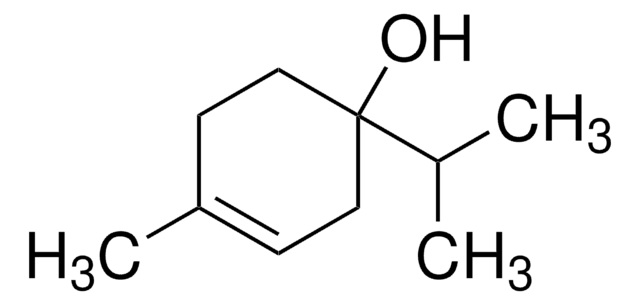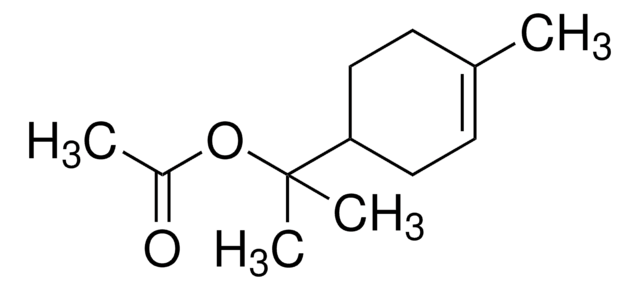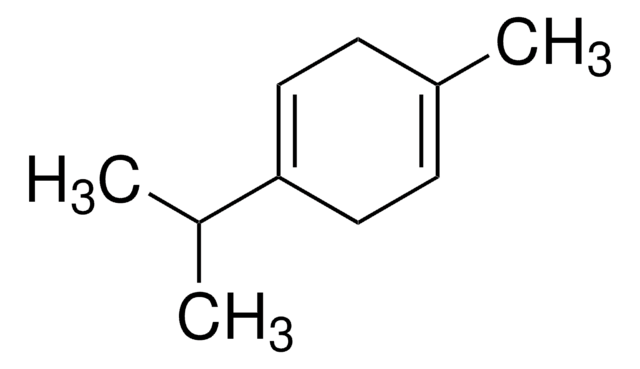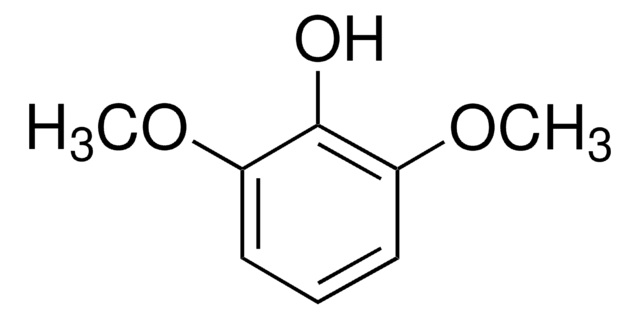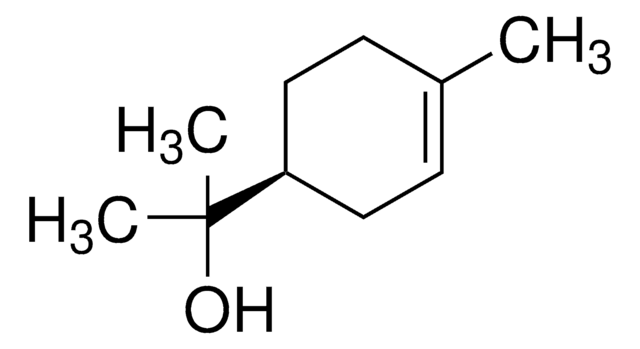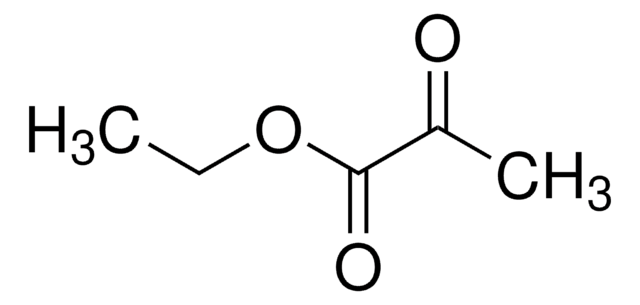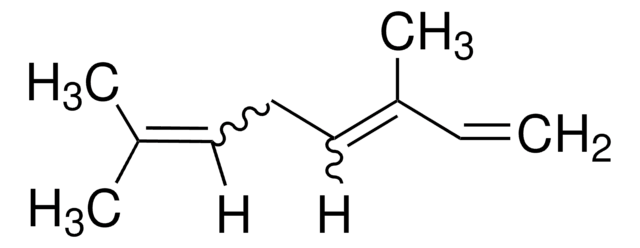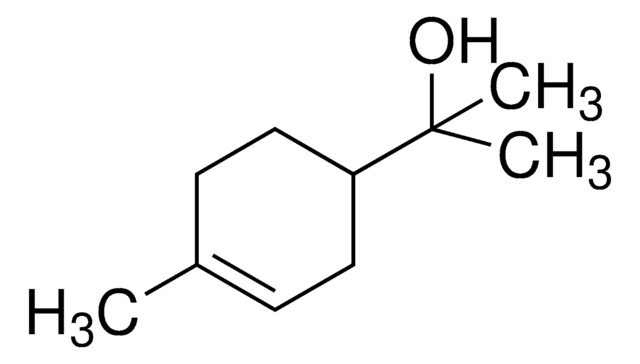W224847
4-Carvomenthenol
≥95%, FCC, FG
Synonym(s):
4-Terpinenol
About This Item
Recommended Products
biological source
synthetic
Quality Level
grade
FG
Halal
reg. compliance
EU Regulation 1334/2008 & 872/2012
FCC
FDA 21 CFR 117
FDA 21 CFR 172.515
Assay
≥95%
refractive index
n20/D 1.478
bp
88-90 °C
density
0.931 g/mL at 25
application(s)
flavors and fragrances
Documentation
see Safety & Documentation for available documents
food allergen
no known allergens
Organoleptic
woody; earthy; pepper
SMILES string
CC(C)C1(O)CCC(C)=CC1
InChI
1S/C10H18O/c1-8(2)10(11)6-4-9(3)5-7-10/h4,8,11H,5-7H2,1-3H3
InChI key
WRYLYDPHFGVWKC-UHFFFAOYSA-N
Looking for similar products? Visit Product Comparison Guide
Related Categories
General description
Application
- 4-Carvomenthenol ameliorates the murine combined allergic rhinitis and asthma syndrome by inhibiting IL-13 and mucus production via p38MAPK/NF-κB signaling pathway axis.: Demonstrates the anti-inflammatory and therapeutic potentials of 4-Carvomenthenol in treating respiratory conditions, highlighting its mechanism of action at the molecular level (Bezerra Barros et al., 2020).
Biochem/physiol Actions
Signal Word
Warning
Hazard Statements
Precautionary Statements
Hazard Classifications
Acute Tox. 4 Oral - Eye Irrit. 2 - Skin Irrit. 2 - STOT SE 3
Target Organs
Respiratory system
Storage Class Code
10 - Combustible liquids
WGK
WGK 1
Personal Protective Equipment
Choose from one of the most recent versions:
Already Own This Product?
Find documentation for the products that you have recently purchased in the Document Library.
Customers Also Viewed
Our team of scientists has experience in all areas of research including Life Science, Material Science, Chemical Synthesis, Chromatography, Analytical and many others.
Contact Technical Service